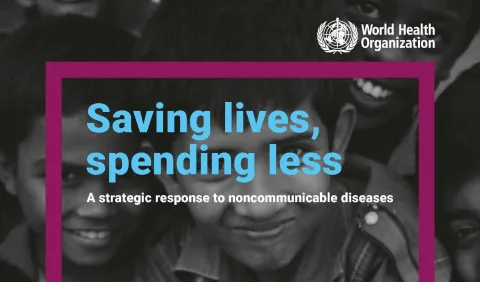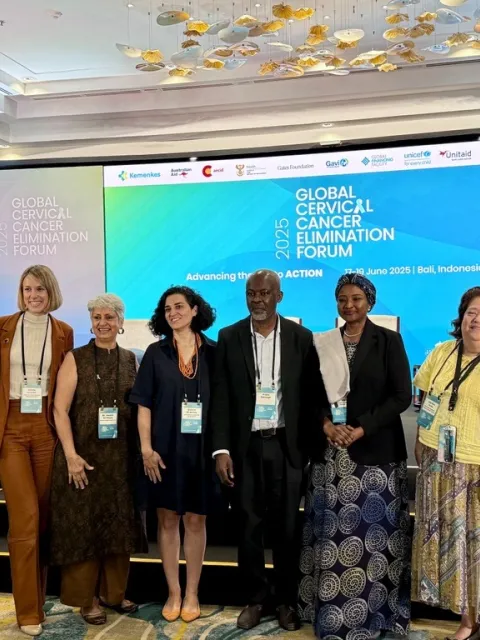New report: health and economic returns on investing in cancer and NCDs
Exciting new report Saving lives, spending less on the investment case for NCDs was launched by WHO on the sidelines of the 71st World Health Assembly.

On the sidelines of the 71st World Health Assembly, WHO launched a new report ‘Saving lives, spending less: a strategic response to noncommunicable diseases’ which presents the economic and social benefits of investing in services for non-communicable diseases (NCDs), including cancer. The report draws on the WHO ‘Best Buys’ for NCDs and focuses on six policy areas including tobacco control, reducing harmful use of alcohol, unhealthy diets, physical inactivity and cancer. The ‘best buy’ interventions for cancer include:
- Vaccination against human papillomavirus (2 doses) of girls aged 9 to 13 years
- Prevention of cervical cancer by screening women aged 30 to 49 years, either through: visual inspection with acetic acid linked with timely treatment of pre-cancerous lesions; pap smear (cervical cytology) every 3–5 years, linked with timely treatment of pre-cancerous lesions; human papillomavirus test every 5 years, linked with timely treatment of precancerous lesions
A US $1 investment in cervical cancer prevention and screening returns US$ $2.74.
Headlines from the report are that:
- An addition US $1.27 is needed per person to implement the full suite of WHO ‘best buys’
- These would help to deliver a 15% potential reduction on premature mortality by 2030
- This equates to 8.2 million lives saved in low- and lower-middle income countries
- It would also generate US $350 billion in economic growth between 2018 and 2030
This is the first time the health and economic benefits of investing in NCDs as a core part of national health and development responses, drawing on cost-effective and feasible interventions to address NCDS in low- and lower-middle-income countries. Released in time for the start of negotiation for the Outcome Document negotiations of the UN High-Level Meeting on NCDs, this resource should provide a powerful tool for advocacy.
In addition to looking at returns on investments, the report also provides an overview of different financing options which could be used to support the implementation of the ‘best buys’ nationally. Read the report 'Saving lives, spending less: a strategic response to noncommunicable diseases’ here
Last update
Tuesday 05 October 2021
